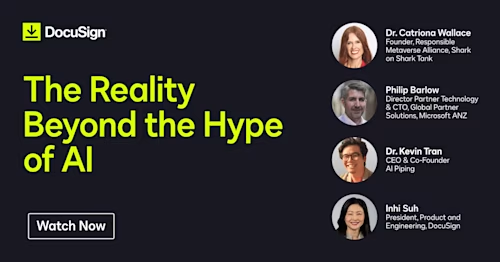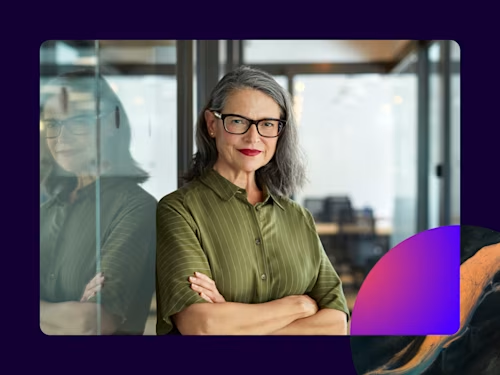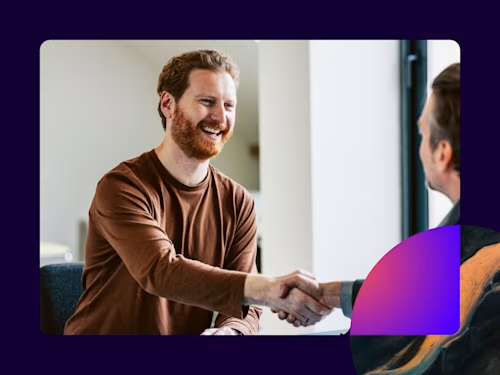
The hype is real: Experts weigh in on how AI is changing the world of work
The hype about AI is deafening. But what does it all mean for businesses, and for today’s workers? We spoke to three experts in the AI field to find out.

Here’s an interesting fact. Already, the average worker interacts with artificial intelligence (AI) around 35 times per day, often without even realising it. For gaming- and media-loving teenagers, the figure is a lot higher.
Here’s another one. New research from the Tech Council of Australia and Microsoft claims that AI technology could add as much as $115 billion to the Australian economy annually within the next seven years — with most of the gains stemming from increases in workforce productivity.
More broadly, according to McKinsey, generative AI could add up to US$4.4 trillion a year to the global economy.
These numbers are huge. And they point to an irrefutable truth: AI is everywhere and it’s up to every business to work out how to use it most effectively. To help shed light on what our AI-powered future holds, Docusign’s Inhi Cho Suh, President, Product and Engineering, hosted a virtual event on the topic this week.
Inhi was joined by panelists Dr. Catriona Wallace, founder of the Responsible Metaverse Alliance and one of the newest sharks on Shark Tank; entrepreneur Dr. Kevin Tran, CEO and co-founder of AI Piping; and Philip Barlow, Director Partner Technology and CTO, Global Partner Solutions at Microsoft ANZ. Below is a recap of their lively discussion, which you can now watch on-demand here.
First, what is AI?
Incredibly, AI has been around since 1956. The term was originally coined at Dartmouth University, according to Catriona, where computer scientists developed software that mimicked human intelligence.
Since then, a lot has changed. “The OECD has just released its new definition of AI, calling it ‘a machine-based system that, for explicit or implicit objective, infers from the input it receives how to generate outputs, such as predictions, content, recommendation or decisions that can influence both physical and virtual environments’,” said Catriona.
Kevin narrowed down the definition, focusing on generative AI and large language models (LLMs) as the key focus areas for businesses today — with the most common business tools in the market today having these AI-powered capabilities embedded in them.
What are the myths and misconceptions around AI?
“The most common misconception that I come across is that people believe they’re really interacting with these AI systems — yet the systems are simply regurgitating things that they’ve seen and the vast datasets they’ve been trained on,” said Philip. “In reality, these foundational language models are just giant word prediction engines. Give them 500 words, and they work out the next word or the next sequence of words that should follow. That’s the skill they’re trained to perform.”
Kevin agreed. “One big misconception I hear a lot is that generative AI produces bland, average answers. Yet there’s a reason for this — and it’s down to the quality of the prompt, and the way you interact with the LLM.”
He used the analogy of Google, pointing out that, in the early days, people struggled with how to do a Google search. It was a behaviour they had to learn, just like prompting ChatGPT.
For Catriona, the biggest misconception is that AI is a ‘magical box’ that can do all sorts of things, really well. “In fact, it can usually do one thing quite well. And that’s what we call artificial narrow intelligence. It’s very important that people using AI in business know that it’s probably good at one or two things only, and isn’t yet what we call artificial general intelligence.”
She also pointed out some interesting ‘myths within myths’ around AI. Firstly, that it’s a destructive force — which she said could be true, but we should focus on making sure it’s used in the right way. And that AI will take people’s jobs — another likely truth, but it won’t take everybody’s job and will in fact create new ones.
Can any business harness AI to remain competitive?
Short answer? Yes. The good news, as Kevin alluded to above, is that the hard work with AI and foundation models has already been done — and it’s now embedded into tools users are already familiar with, providing the launchpad for automation of many manual tasks.
Philip explained, “You become a consumer of a set of tools. And any organisation with a developer capability within their business, whether that be just a few people in a startup through to the largest enterprise organisations, can on-ramp pretty quickly with some pretty simple training. It’s all available for them to experiment with and start their journeys.”
OK, so where should you start as a business?
“Honestly?” asked Kevin. “ChatGPT. It’s so good, so available and so cheap as well. I know a lot of smaller companies that don’t necessarily have a big budget for SaaS subscriptions. So just getting their hands dirty, thinking about their first use case, learning a little bit about prompt engineering — it will all help deliver tremendous value.”
Philip said that a great place to start is by automating all of the non-value-adding tasks in an organisation, thus freeing up people’s time to focus on what they’re really good at.
“I’m a little biased here, as I work for Microsoft, but I’m really impressed with the direction that Microsoft is taking with the concept of copilot versus autopilot,” he said. “Many organisations are following the same pattern as well. So it’s that ability to have a personalised assistance that can do things for you — all the way from creating the dirty first draft through to summarising copious amounts of information. Anything that can help with our busy days.”
With the tech evolving so fast, what advice do you have for workers?
The World Economic Forum predicts that, by 2025, 85 million jobs will be fully replaced by AI, while 92 million jobs will be created. Yet, as Catriona observed, it’s not as encouraging as it sounds. “What we do know is that 90 percent of the jobs likely to be lost to AI will be the jobs of women, minorities and youth. So there is a real concern there,” she said.
To prepare for the huge changes ahead, Kevin recommended that workers take action to teach themselves how to become an AI ‘power user’. “It’s not that hard. The bar is very low, because everyone only started on this one year ago. My advice is to go on the internet, find a great course, and spend a few hours learning.”
And Philip? He is pragmatic. “Today’s only day one. We’re trying to predict the future — whereas today, with the technologies we have available, we’re not looking at job losses, but at tasks people perform. The automation side will absolutely impact and remove tasks from people’s working days,” he said.
“And if we do think about the future, then we need to think about how to make it a soft landing for as many people as possible, accelerating the positives wherever we possibly can. Particularly in industries where we are directly impacting as many people as possible, like healthcare and education. I think if we keep this at the forefront of our minds, then we’re going to be on a pretty safe footing and a strong journey towards success for all.”
Beyond the hype, there’s a bright future for AI
The key message coming out of this panel? The future is bright. As Kevin said, “I feel like it’s a great time to be alive and I’m super happy to be here experiencing it all.”
And it’s just the beginning. Whether you’re a developer or an everyday person wanting to use one of the new generative AI interfaces, you can start learning today. You don’t have to be at the bleeding edge of tech — there’s tremendous opportunity for everyone.
Feeling the buzz? To hear more about what Catriona, Kevin and Philip have to say about AI, you can watch the full webinar now.
Related posts
 Insights for LeadersUpdated 11 Mar 2025
Insights for LeadersUpdated 11 Mar 2025 Insights for LeadersPublished 11 Feb 2025
Insights for LeadersPublished 11 Feb 2025Become an Account Management Hero with Docusign Admin Tools

How AI Is Changing the Customer Experience Landscape

Become an Account Management Hero with Docusign Admin Tools
Discover what's new with Docusign IAM or start with eSignature for free

